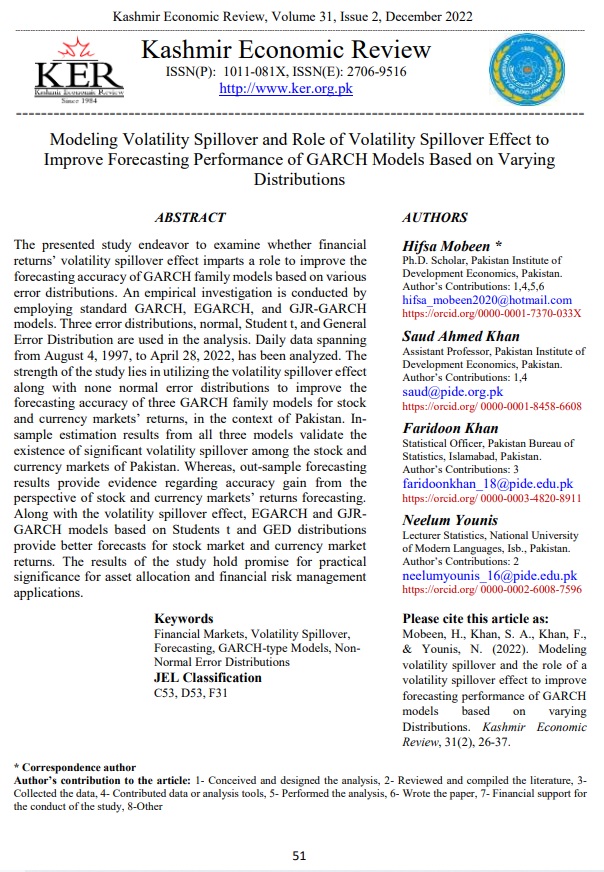Modeling Volatility Spillover and Role of Volatility Spillover Effect to Improve Forecasting Performance of GARCH Models Based on Varying Distributions
##plugins.themes.bootstrap3.article.main##
Özet
The presented study endeavor to examine whether financial returns’ volatility spillover effect imparts a role to improve the forecasting accuracy of GARCH family models based on various error distributions. An empirical investigation is conducted by employing standard GARCH, EGARCH, and GJR-GARCH models. Three error distributions, normal, Student t, and General Error Distribution are used in the analysis. Daily data spanning from August 4, 1997, to April 28, 2022, has been analyzed. The strength of the study lies in utilizing the volatility spillover effect along with none normal error distributions to improve the forecasting accuracy of three GARCH family models for stock and currency markets’ returns, in the context of Pakistan. In-sample estimation results from all three models validate the existence of significant volatility spillover among the stock and currency markets of Pakistan. Whereas, out-sample forecasting results provide evidence regarding accuracy gain from the perspective of stock and currency markets’ returns forecasting. Along with the volatility spillover effect, EGARCH and GJR-GARCH models based on Students t and GED distributions provide better forecasts for stock market and currency market returns. The results of the study hold promise for practical significance for asset allocation and financial risk management applications.
##plugins.themes.bootstrap3.article.details##

Bu çalışma Creative Commons Attribution-ShareAlike 4.0 International License ile lisanslanmıştır.

